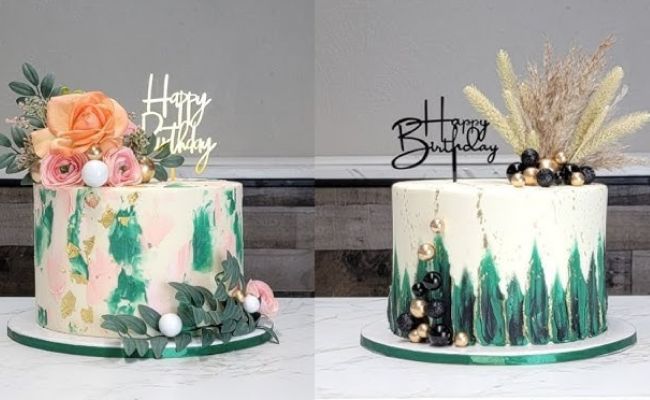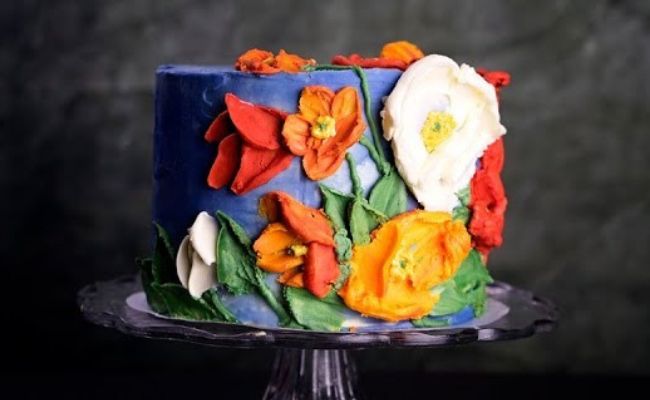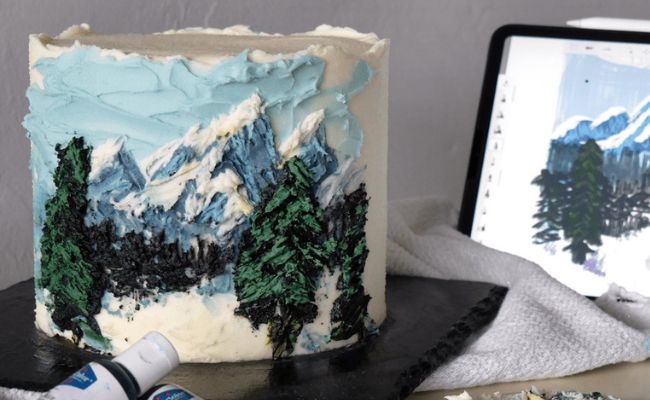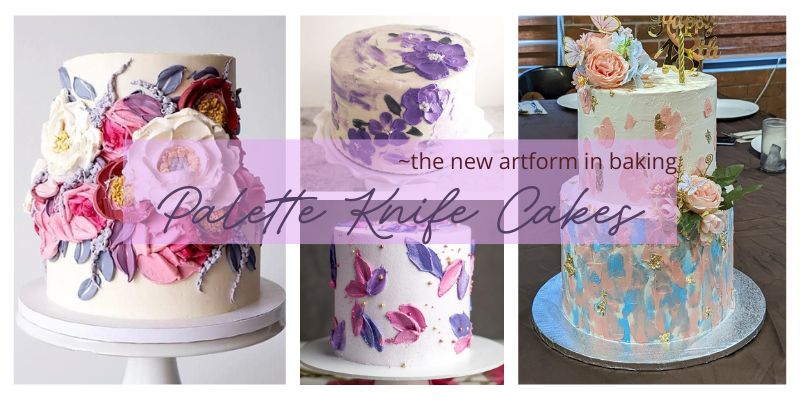Table of Contents
Cake decoration has always mirrored the times. There was a time when ornate royal icing ruled wedding tables. Then came the clean precision of fondant, the rustic charm of naked cakes, and the glossy drama of drip cakes. Today, a new trend is quietly turning cakes into edible canvases: Palette Knife Cakes.
These desserts blur the line between patisserie and art studio. Each swirl and smear tells a story through colour, movement, and texture. More bakers are swapping piping bags for palette knives, and the results are stunning. It sparks a thought worth asking: Could palette knives replace traditional fondant and piping techniques in the future of baking?
What Are Palette Knife Cakes?

At their heart, palette knife cakes are about texture and creativity. Instead of intricate piped flowers or fondant moulds, bakers use flat metal tools. It’s the same kind artists use for painting, to apply frosting in sweeping, painterly strokes.
Each stroke leaves behind ridges and blends of colour that look hand-painted. Depending on the pressure, angle, and type of icing, decorators can create soft blooms, feathery petals, or bold abstract waves. Some designs appear like impressionist paintings, others like sculpted murals.
The charm lies in their simplicity. There’s no need for perfect symmetry or glossy finishes. The imperfections of those tiny ridges of buttercream, those layered smudges, give the cake its personality.
The Rise of Palette Knife Cakes

Social media, as always, plays the part of trend amplifiers. Scroll through Instagram or Pinterest and you’ll find endless videos of cake artists rhythmically spreading buttercream into blooming roses or swirling pastels into ocean-like patterns. It’s visual poetry, that’s calming, satisfying, and strangely addictive.
This sensory appeal, paired with the visual charm of textured frosting, helped palette knife cakes rise to fame. Artists like Atelier Soo, Grace Stevens, and several independent bakers worldwide turned these techniques into signature styles.
Compared with the crisp glamour of fondant or the dramatic drip trend, palette knife cakes feel warm, human, and tactile. They invite admiration not through perfection, but through artistry.
The Techniques Behind Palette Knife Cakes
You don’t need a professional bakery setup to start creating. Here’s what’s essential:
- Palette Knife or Offset Spatula: The main tool that shapes every design. Smaller knives help with detailed petals or leaves, while larger ones create broader, smoother strokes.
- Buttercream or Ganache: Buttercream gives a soft, blended look, while ganache holds bold, defined textures. Some bakers combine both for added depth.
- Chilled Cake Surface: A firm, cold base ensures the icing spreads evenly and holds its shape, preventing colours from merging unintentionally.
- Learn basic strokes: Start with small swipes to see how pressure changes the effect.
- Experiment with colour: Use contrasting tones for impact or analogous hues for a softer gradient.
- Keep icing consistent: Too stiff, and it will drag; too soft, and the texture won’t hold.
- Build layers: Apply a base layer, chill the cake, and add textures on top for dimension.
- Watch lighting: Natural light enhances depth, helping you see where highlights and shadows fall.
Once you’ve prepped your cake, add dabs of coloured icing and drag the knife lightly across the surface. Short strokes create petals, while sweeping arcs build depth and texture. Some bakers even mix hues directly on the cake, blending tones like a painter mixing oils on canvas.
Working with buttercream gives you flexibility to adjust or remove layers easily. Ganache provides more structure and shine. Experimenting with both can produce different visual effects like matte, glossy, smooth, or rustic.
Why Are Palette Knife Cakes Gaining Popularity?
The charm of these cakes runs deeper than aesthetics. They give bakers a sense of freedom. Each cake becomes a one-off expression. There’s no template, no rulebook. It’s art therapy with frosting.
Their approachable nature also appeals to beginners. Unlike intricate piping, which demands consistent precision, palette knife work rewards intuition and creativity. One can start with simple textures and gradually evolve to complex compositions.
From a design perspective, these cakes suit modern tastes. People now lean towards minimalism and personal expression. A palette knife cake fits beautifully into weddings that favour natural decor or birthdays that seek understated elegance. They’re as perfect for intimate gatherings as for grand celebrations.
How to Master Palette Knife Cake Art

Mastery begins with patience and play. Here are some simple steps to build skill:
For those ready to push boundaries, try multi-layered patterns, ombré effects, or 3D florals. Videos from professional decorators can help visualise knife angles and hand movement, making practice sessions smoother.
Popular Styles of Palette Knife Cakes
Palette knife cakes vary in style, some are soft and subtle, others bold and textured. Each design reflects the baker’s creativity, making every cake visually unique and full of character.
• Impressionist-Inspired Cakes:
Soft pastels, gentle strokes, and dreamlike blends make these cakes resemble Monet’s gardens. Perfect for romantic weddings or springtime brunches.
• Geometric Designs:
Using controlled strokes, decorators craft clean lines and angular shapes. Ideal for modern celebrations or minimalist clients.
• Abstract Expressionism:
Think bold colours, sweeping gestures, and textured chaos. Every slice reveals a unique pattern, that’s a favourite for artistic personalities.
• Seasonal & Themed Cakes:
Bakers also use palette knives to capture seasonal moods, like warm oranges for festive, frosty blues for winter, floral tones for spring, and tropical shades for summer.
The Future of Palette Knife Cakes
What lies ahead for this edible artform? Innovation. Bakers are already blending techniques like watercolour effects, metallic dusting, and edible gold accents into palette knife designs. Some even combine them with stencilling and airbrushing to create layered artistry.
Commercial bakeries are catching on too. Clients are increasingly drawn to handcrafted finishes over mechanical perfection. Palette knife cakes may soon become as standard as buttercream roses once were personalised, artistic, and emotionally resonant.
This approach also fits neatly into the movement towards sustainability and authenticity. These cakes often use less decorative waste, skip heavy fondant layers, and focus on craftsmanship.
Conclusion: Why Palette Knife Cakes Are Here to Stay
Palette knife cakes have transformed baking into fine art. They prove that creativity doesn’t require expensive tools, only imagination and courage to play with texture and colour. Each knife stroke is an emotion frozen in frosting.
If you’ve ever wanted to combine baking with self-expression, this is your moment. Grab your palette knife, trust your instincts, and start creating.
Your cake has become your live canvas. Paint it with flavour, emotion, and flair.







